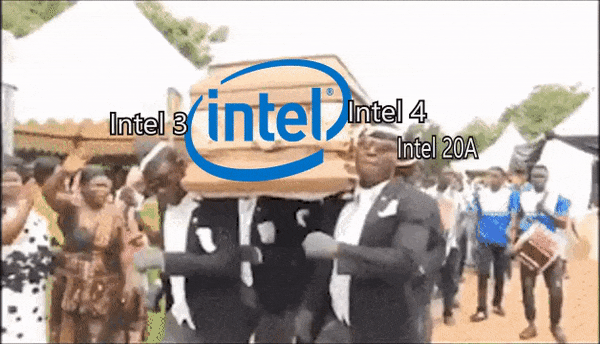After investing billions in enhancing their domestic fabrication capabilities, Intel would choose to utilize “inferior” silicon for their upcoming Core processors.
During the session, Pat mentioned that Intel has partnered with TSMC for its CPU designs, and upcoming generations like Arrow Lake and Lunar Lake will progress from 5nm to 3nm nodes as a result of this collaboration.

Furthermore, as previously discussed, official documentation indicates that Intel’s forthcoming Lunar Lake-MX series will be exclusively manufactured using TSMC’s N3 process.
This decision marks a gradual departure from Intel’s own foundries, despite significant investments in cutting-edge chip production facilities in Germany and Israel.
As per a report from China Times, Gelsinger has confirmed the increased orders to TSMC, specifying that TSMC will handle orders for Intel’s Arrow and Lunar Lake CPU, GPU, and NPU chips this year, utilizing the N3B process.
This marks the official debut of Intel’s long-awaited notebook platform. Previous leaks suggested that Intel’s Arrow Lake processor family would feature CPU tiles manufactured using their in-house 20A process, while TSMC would handle the GPU tile aspect with their 3nm N3 process node but that no longer seems to be the case.
Expected to launch later this year, this generation’s “officially confirmed” upgrade to 3nm is anticipated to bring significant efficiency improvements, which is an area that current Intel Core processors fall way behind in versus AMD’s Ryzen processors, even with the recent addition of their Core Ultra “Meteor Lake” mobile processors, Intel’s efficiency is still woeful at best.
With a projected launch window set for 2025, certain aspects of Lunar Lake’s internal architecture remain undisclosed. Gelsinger has confirmed TSMC’s involvement with the N3B process, yet Intel’s in-house manufacturing choices for LNL chips have not been officially disclosed.
Wccftech suggests that Lunar Lake will feature the same P-Core (Lion Cove) and new E-Core (Skymont) core architecture, likely fabricated on the 20A node for its CPU tile but I remain skeptical.
In recent memory, Intel had been given a pittance by the US Government following the passing of the CHIPS act otherwise known as “Creating Helpful Incentives to Produce Semiconductors for America”.
The CHIPS Act is a US Congressional legislation designed to strengthen domestic semiconductor manufacturing and supply chains. It allocates funding for semiconductor research, manufacturing incentives, workforce development, and domestic production facilities.
Its aim is to decrease dependence on foreign semiconductor production and maintain competitiveness in semiconductor technology.
Intel, along with other semiconductor companies like TSMC, received a significant cash injection of around ten billion dollars to support their efforts in building semiconductor manufacturing plants in Arizona. This financial support aims to assist the American semiconductor industry in reclaiming its leadership position.

Despite committing to a 5-year plan involving 4 nodes, Intel has demonstrated a notable reliance on TSMC to fulfill its supply demands for client CPUs which is concerning.
At IFS Direct 2024, the company streamlined its Foundry Services to Intel Foundry and introduced a new 14A node alongside various sub-variants of existing nodes. Intel’s discrete GPU family currently utilizes TSMC’s N6 process node, and this is anticipated to continue with the upcoming Battlemage discrete lineup, slated for release sometime this year.
However, I can’t help but wonder why Intel is heavily reliant on rival semiconductor companies like TSMC, particularly after receiving substantial subsidies to strengthen its own fabs.
Despite ambitious claims of deploying five different processing nodes in just four years, Intel aggressively asserts to its investors that it will regain leadership in the semiconductor sector with the most advanced processing nodes on the planet.
This reliance on TSMC for manufacturing its products today suggests a gradual shift towards becoming another TSMC customer, similar to AMD and Apple. It’s clear why Intel are doing this, either it’s because TSMC silicon is vastly superior to their own or more rather this is simply a cost cutting procedure as the company continues to face financial hardship with each passing quarter as their inferior products are being obliterated by AMD’s counterparts.
The most disappointing aspect is how Intel has persuaded the US Government to allocate billions of dollars for the construction of more advanced fabs, only to opt for the gradual adoption of “inferior” TSMC silicon instead of utilizing their own produce.

